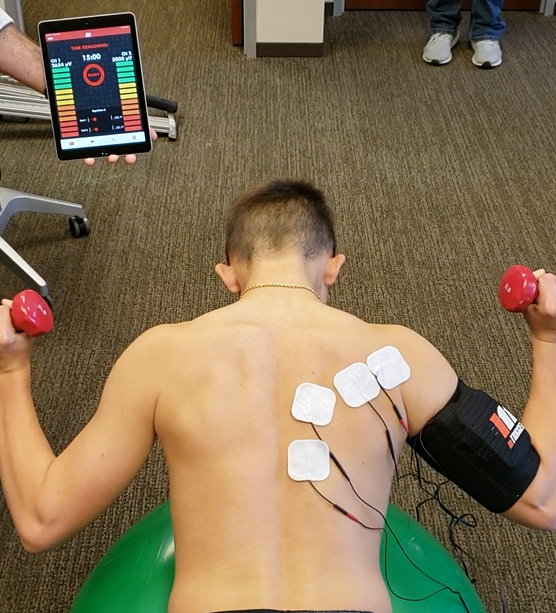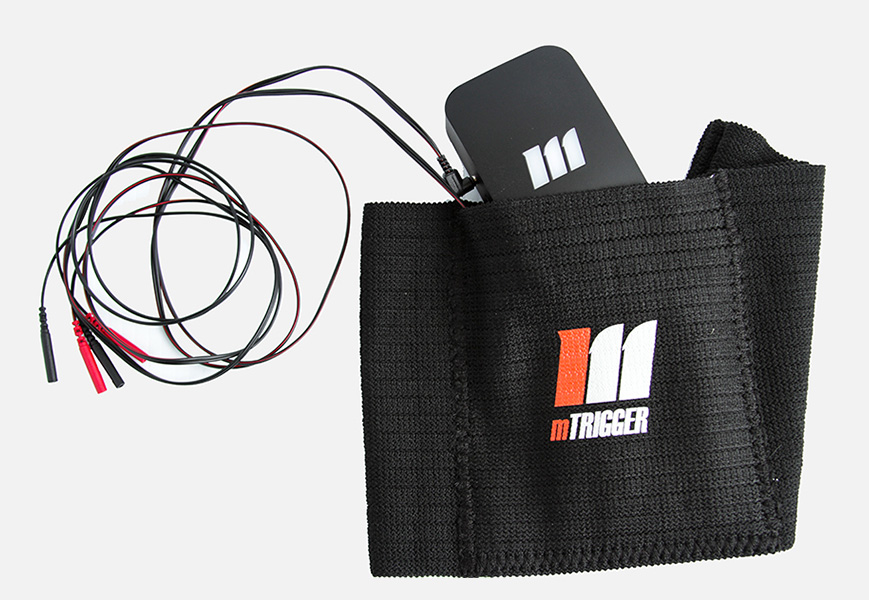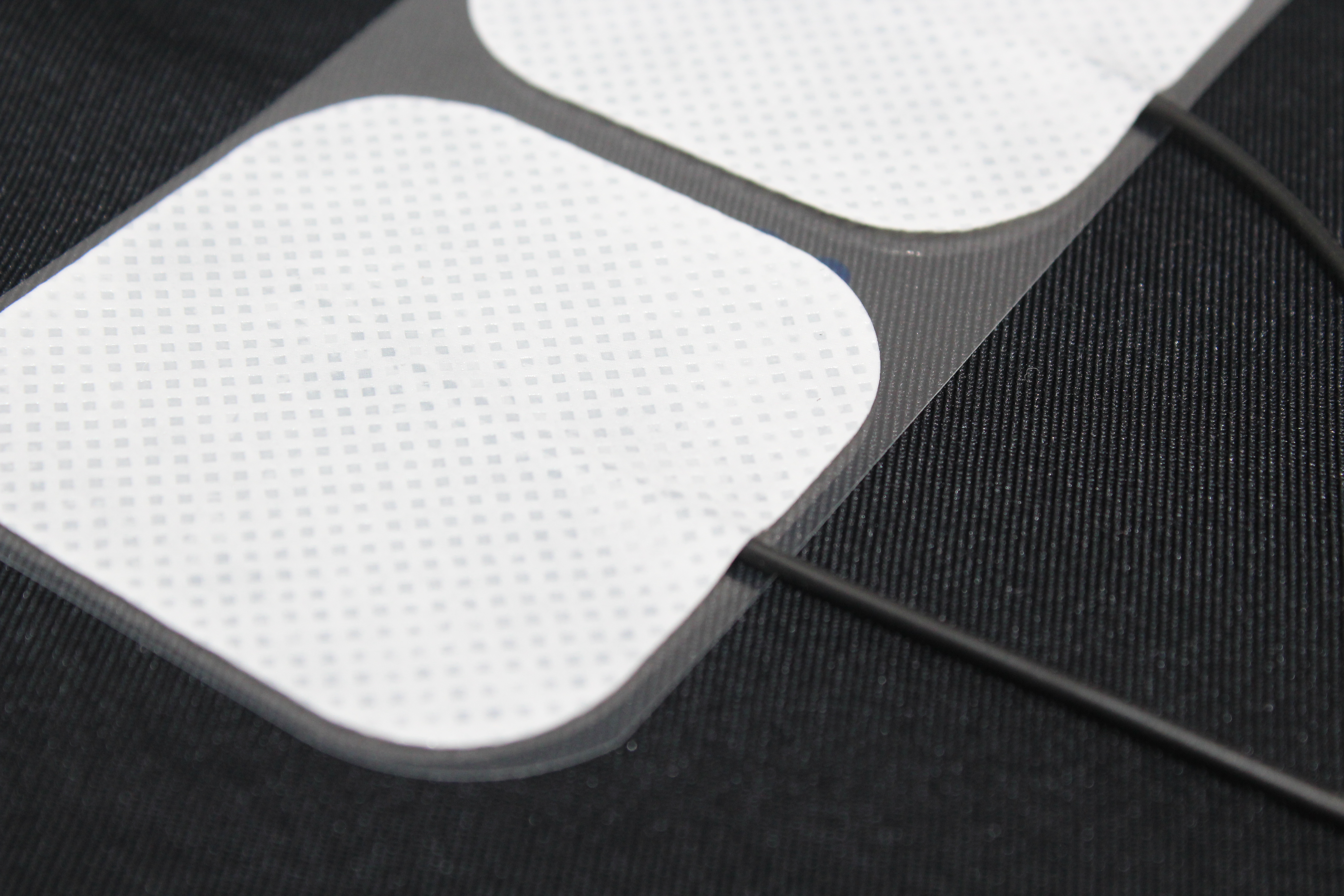“It’s all about neurological inhibition targeting – muscles can get ‘turned off’ with swelling, trauma, injury, pain guarding; biofeedback gives you a proprioceptive sense of turning those muscles back on where EMS [electrical muscle stimulation] can’t.”
Mike Lurvey – a therapist, athletic trainer, and educator with more than 35 years field experience – certainly believes in the benefits of biofeedback.
He often sees patients whose chronic conditions of tendinitis, spasm, and inhibition have caused long term frustration and physical damage. They wind up in his care looking for something different, and they find that solution in neuromuscular re-training. Ultimately, Lurvey says, you can’t strengthen the right muscles without activation, and while experienced PTs know how to spot weakness and its symptoms right away, it is often hard to help patients establish the critical mind-body connection needed to restore voluntary activation. So he uses biofeedback training to overcome the inhibition of the muscle as the nerve recovers.
As noted in the case report Functional and Biomechanical Outcomes in a Patient After Total Knee Arthroplasty: Biofeedback for Retraining Symmetrical Movement Patterns, “normal and symmetrical [knee] motion improved to a greater extent than the average of a comparative group of subjects who received progressive strengthening but did not participate in the biofeedback protocol.” By incorporating biofeedback into standard rehabilitation programs, patients can better understand their performance and use that knowledge to achieve results. Similarly, clinicians can document an objective improvement of EMG activity over time, which demonstrates improvement in neuromuscular control as well as correlates with strength (DOI: 10.1186/1475-925X-13-5).
Take for example the case of a patient whose chronic shoulder dislocation had accompanying axillary nerve damage. The options to assess the damage without sending for a multi-thousand-dollar clinical grade EMG test have, in the past, been limited. However, by using mTrigger, the patient’s clinician measured neuromuscular activation of rotator cuff musculature reflecting a deficit of 58% (1200 uV non-involved vs. 500 uV involved) on-the-spot. This EMG-based assessment of nerve damage allowed the clinician and patient to gain proper documentation of her condition and proceed with treatment which included the use of biofeedback training.
The ability to perform simple, inexpensive assessments such as that above would allow for new standards of care. Imagine being able to provide a baseline deficit measurement and real-time activation data to encourage accurate maximum voluntary contraction on every rep. Imagine subsequently achieving concrete goals in your treatment outcomes. Imagine this is all happening via your mobile device and costing you less than $400.
For many years, the ability to demonstrate and document nerve damage has been cost-prohibitive. But with mTrigger, such assessments are affordable and accessible – ne’er we say, indispensable. Biofeedback is a simple concept that has persisted despite being left out of the limelight. It has persisted because it works. Helping to identify, isolate, and effectively target the “why” of a patient’s condition, biofeedback is versatile and user-friendly. Applications range from inhibited peroneal strengthening in acute ankle sprain, to rotator cuff weakness due to humeral fracture, to co-contraction of the quadriceps and glutes in functional movement retraining or post-TKA… the list goes on. But no matter the diagnosis, it is always critical to re-strengthen and re-educate properly in order to enable patient recovery, and, as Lurvey puts it, “mTrigger appears to be our best option to achieve this goal.”
____________
Mike Lurvey is an athletic trainer and physical therapist with over 35 years of clinical experience treating high-level athletes with cutting edge treatment techniques. He has recently been working with the mTrigger® device in clinic and achieving great outcomes; he is developing new treatment protocols that have incorporated surface EMG an essential clinical tool. Mike Lurvey teaches a course in sports rehabilitation for Summit Professional Education.
Want to read more? Click below for insights into utilizing biofeedback to prevent injury:
|









Leave A Comment